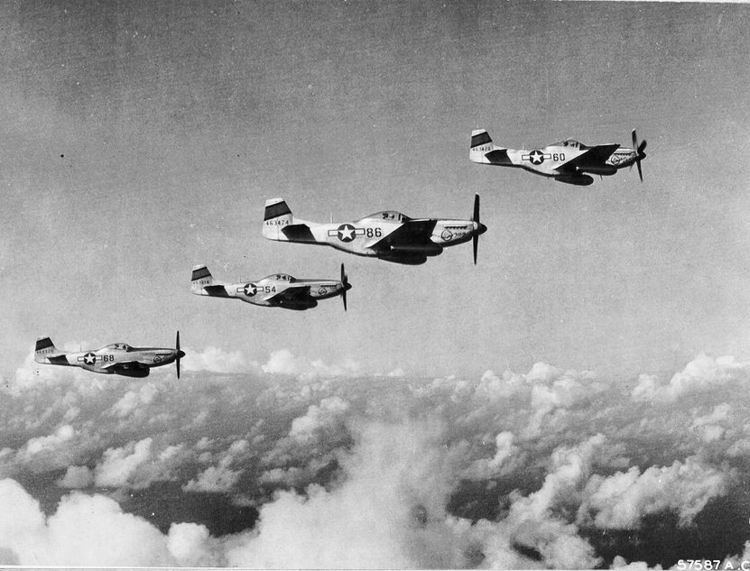Active 1942–1948 Role Command and Control | ||
 | ||
Engagements World War IIAsiatic-Pacific Campaign (1944–1945) | ||
The VII Fighter Command was a formation of the United States Army Air Forces. Its last assignment was with Far East Air Forces, based on Guam, Mariana Islands. It was inactivated after being redesignated the 46th Fighter Wing on 24 August 1948.
Contents
History
The command was established in Hawaii in February 1942. From its inception until March 1945, the mission of the command was the air defense of the Hawaii Territory. Within ten days after the Attack on Pearl Harbor, the VII Interceptor Command consolidated all Hawaiian Islands defense units. In May 1942, the unit was redesignated the VII Fighter Command, constituting the fighter arm of Seventh Air Force, and its defensive responsibilities expanded to include Midway Island; Canton Island Airfield in the Phoenix Islands and Christmas Island Airfield in the Line Islands.
It's assigned units were deployed to forward bases in the Central Pacific Area in rotational deployments. During the assault on the Marshall Islands by Seventh Air Force bombers that began in late 1943, VII Fighter Command pioneered the use of long range fighter escort in the Pacific theater. B-25 Mitchell medium bombers attacking the island chain were being harassed by Japanese fighters who would begin their attacks after the bombing run and break off at the point they estimated to be the maximum range of Seventh Air Force fighters. The Seventh eventually fitted some of its P-40 Warhawks with belly tanks, and on January 26, 1944, sent them out to wait above the clouds for the pursuing Japanese. They shot down ten enemy fighters in three minutes, effectively ending interception of the bombers over the Marshalls.
By March 1944, VII Fighter Command was back on Oahu for regrouping, reinforcement, aircraft transition, and general reorganization in preparation for the Marianas campaign. Its strength was increased from four squadrons to three complete fighter groups of three squadrons each.
It was during the Mariana and Palau Islands campaign in mid-1944 that the command began their transition from a static defensive unit in the rear to the spearhead of the attacks on Japan. VII Fighter Command participated in the seizure and consolidation of that island group and, more importantly, gained valuable experience in long-range operations, escorting Thirteenth Air Force B-24 Liberators on strikes to Iwo Jima and Truk from its base on Saipan.
Beginning in March 1945, the command was reassigned to Twentieth Air Force on Iwo Jima, which had been sized by Marine Corps units to provide emergency landing fields for B-29 Superfortresses. From its forward airfields on Iwo Jima, its mission became the command and control echelon of fighter groups providing escort of B-29 Superfortress bombers operating from bases in the Mariana Islands. The command's units flew Very Long Range (VLR) bomber escort operations against the armed forces of the Empire of Japan.
On 7 April 1945, 119 P-51 Mustangs of VII Fighter Command lifted off from Iwo Jima on the first Very Long Range (VLR) mission by land-based fighter aircraft against the Japanese mainland. Off the coast of Honshu they rendezvoused with more than 100 B-29 Superfortresses for an attack on the Nakajima aircraft plant in Tokyo. The B-29s had been taking heavy losses to Japanese fighters on these Empire strikes, but the 110 to 125 who came up to greet them this day were in for a surprise.
VII Fighter command pilots described the Japanese, who attacked singly during the bomb run and immediately after, as easy targets for the Mustangs that broke off in pairs to engage them. Combined, the American fighters and bombers accounted for 71 Japanese aircraft destroyed, along with 30 probably destroyed of the 44 that were damaged.
After the end of the war, the command was re-designated as a Wing, with the elimination of the command echelon in the postwar Air Force. It moved to Guam in the Marianas and remained assigned to the Far East Air Force. The organization was inactivated on 24 August 1948.
